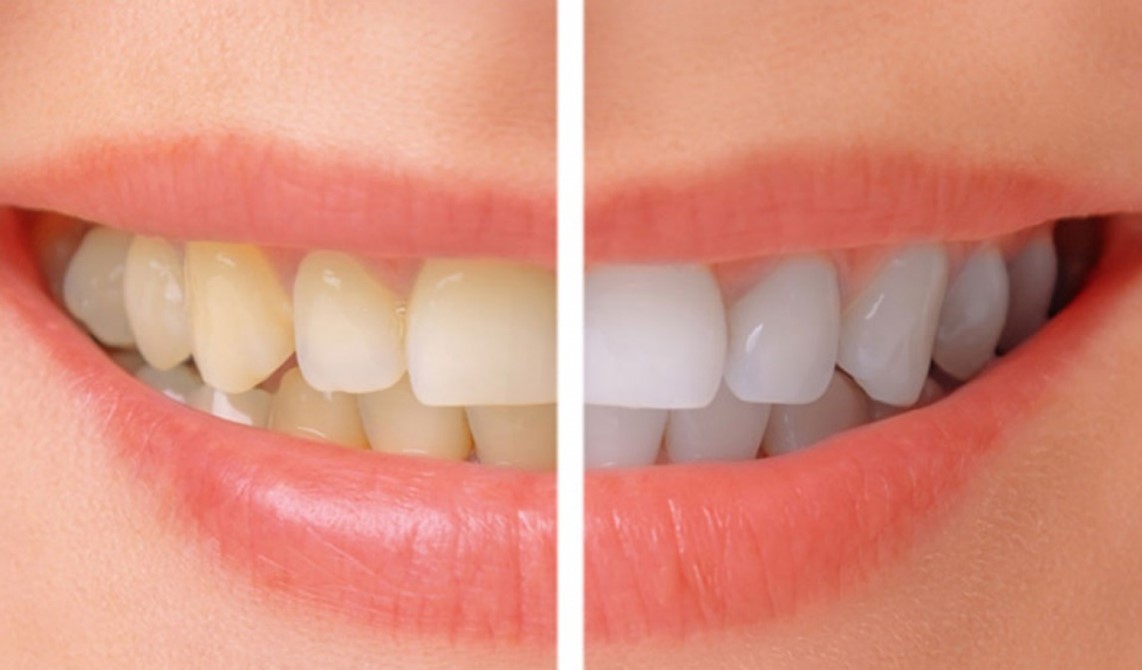Tooth whitening, also known as teeth bleaching, is a cosmetic dental procedure designed to lighten the colour of teeth and improve age related discoloration. It works by using various chemical agents to break down bonds within the dentine (the inner layer of the tooth). Here’s a basic overview of how tooth whitening works:
Surface Stains Removal:
Teeth discolour from either extrinsic and intrinsic causes. Extrinsic stains are located on the outer surface of the teeth and are often caused by factors like consuming coffee, tea, red wine, tobacco, or foods that can stain teeth. These are removed using a prophylactic jet of water and calcium carbonate.
Intrinsic Stains Treatment:
Intrinsic stains are located within the tooth’s structure and may be caused by factors such as aging, trauma, or exposure to certain medications during tooth development. These stains are often more challenging to treat and typically require professional tooth whitening procedures.
Use of Whitening Agents:
Professional tooth whitening procedures typically use whitening agents that contain hydrogen peroxide or carbamide peroxide as the active ingredients. These agents break down into oxygen molecules, which enter the tooth enamel and dentin to break apart the chemical bonds that hold the stain molecules together.
Activation of Whitening Agents:
The whitening agents are often activated by a specialized light source or heat, which helps accelerate the breakdown of stain molecules. The light or heat source is sometimes used in in-office whitening procedures but is not always necessary for at-home treatments.
Duration of Treatment:
The duration of the treatment can vary depending on the method used. In-office treatments usually take about one to two hours, while at-home treatments may involve wearing custom-made trays filled with whitening gel for a specified period each day over a week or more.
Results:
Tooth whitening can significantly improve the colour of your teeth. However, the extent of improvement varies from person to person and depends on factors like the type and severity of stains, the method of whitening used, and individual tooth structure.
Maintenance:
After a professional whitening treatment, it’s important to maintain good oral hygiene practices to prevent new stains from forming. Avoiding or minimizing consumption of staining substances, regular dental check-ups, and occasional touch-up treatments can help prolong the results of tooth whitening.
It’s important to note that tooth whitening is not suitable for everyone. Individuals with certain dental conditions, such as cavities, gum disease, or very sensitive teeth, may not be good candidates for teeth whitening. Consulting with a dentist or dental professional is essential to determine the most appropriate whitening method and to ensure that the procedure is safe and effective for your specific oral health needs.




Recent Comments